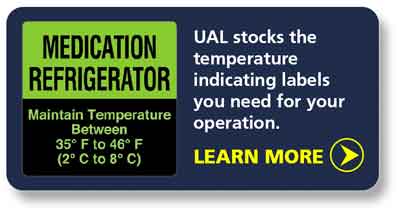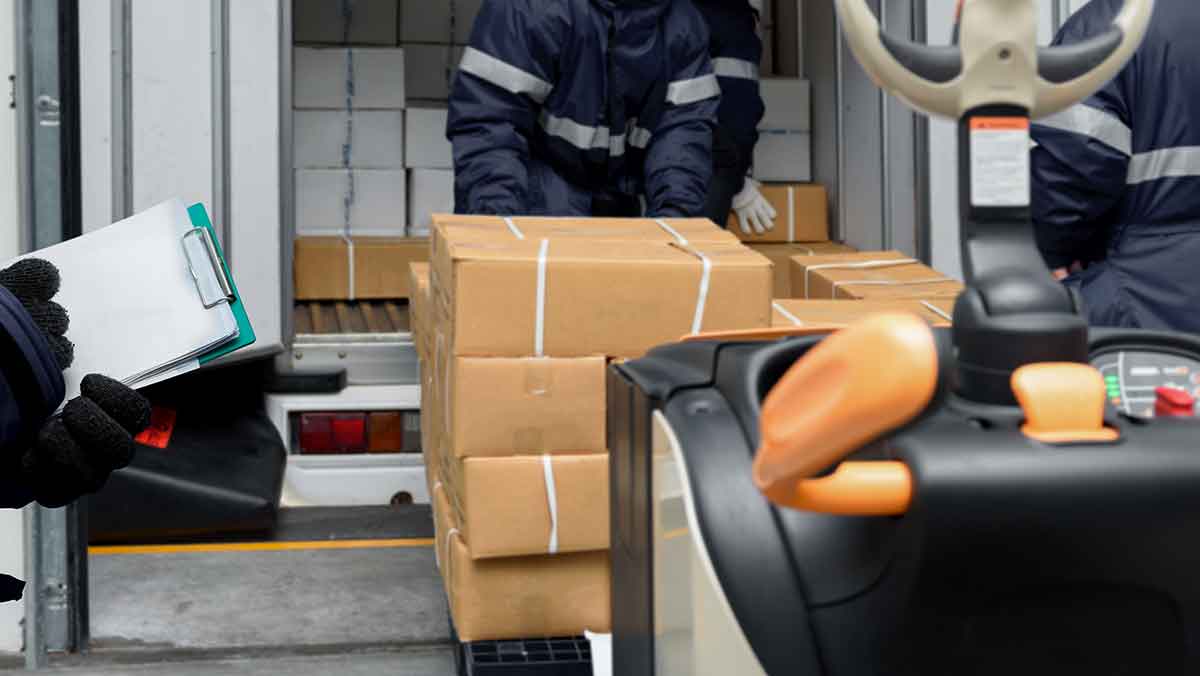Depending upon the time of year, a package waiting for shipment on a warehouse dock, or in a trailer en route to its end destination, can reach temperatures of 150 degrees in the summer to 20 to 30 below zero in the winter. Although some products can withstand these types of temperature extremes, others can’t. For example, maintaining specific temperatures for storing and shipping food, medications, chemicals and more are a necessity. High temperature adhesive labels are one way to ensure those requirements are met. Use this guide to temperature indicating labels to monitor your critical products and ensure temperature guidelines are met.
 What Are Temperature Indicator Labels?
What Are Temperature Indicator Labels?
Temperature indicator labels monitor and record temperatures to detect if established ranges are maintained. For the efficacy of vaccines and medications, the freshness of consumer products and the long-term reliability of equipment, it’s paramount to maintain specific temperature levels. Temperature indicator labels provide that critical information, ensuring product safety and reliability.
What Do You Use Temperature Labels For?
From operational temperatures to those maintained during shipping and storage, temperature labels track the temperature range for various products.
- Medications and Vaccines - some medications and vaccines have rigid temperature requirements. For example, mRNA vaccines require cold storage as low as -80° C. Applying cold storage temperature indicating labels to the shipping containers will clearly show if the appropriate temperature range is maintained.
- Consumer Product - for frozen foods or those that require refrigeration, temperature labels allow you to see if an item reached the freezing point, thawing temperature, or has been exposed to temperatures too warm during the shipping process.
- Equipment - cars are equipped with a temperature gauge that monitors the temperature of the motor. If the needle points to H, it’s time to take action. But many devices operating in a manufacturing environment don’t contain that type of detecting device. That’s where temperature labels come into play. They provide readings to help ensure the equipment operates in a proper range, reducing downtime and maximizing longevity.
How Do Temperature Labels Work?
Temperature labels use two fluids with a tiny capillary tube, one clear and one colored. The colorless fluid is formulated for specific temperature points. If that temperature point is reached, the colored fluid is activated causing an irreversible color change. If your product arrives with labels that display a colored liquid, you know your shipment has been compromised.
Types Of Temperature Indicator Labels
There are a number of unique temperature indicator labels designed to monitor the exposure of products to both hot and cold temperature extremes.
- Reversible/Irreversible - a reversible temperature indicating label is like a thermometer. As the temperature rises and falls, it indicates the current temperature. An irreversible temperature indicating label is a one-time usage indication that a specific temperature has been reached.
- Multiple Level Temperature Labels - show temperature changes in increments of one, three, five and eight. A coating changes color as temperatures rise above specific values.
- Time-Temperature Indicators - with a variety of time and temperature ranges, time-temperature indicators can be used to monitor the cold chain for perishable products, vaccines, medications and more during shipping and storage.
- ColdMark Temperature Indicators - provide alerts when exposure below a certain level has occurred. These stick-on temperature indicator labels can be applied to a product, package, carton, or master pack of items sensitive to extremely cold temperatures.
- WarmMark Temperature Indicators - provide alerts when exposure to a temperature above a certain level has occurred. A red dot provides evidence of time exposed to activation temperature in ranges from brief, 30 minutes; moderate, two hours; prolonged, eight hours, or more.
- Cold Chain Complete labels protect against the potential for both warm and cold temperature extremes during shipment. These single use devices provide accurate, irreversible evidence of a temperature excursion.
Both ColdMark and WarmMark products have a variety of different time and activation temperature ranges.
Temperature Indicating Labels at UAL
United Ad Label high temperature adhesive labels help pharmaceutical companies, healthcare providers, frozen and refrigerated food businesses, industrial equipment manufacturers and more ensure their products maintain the required temperatures. Learn more about these products here.
